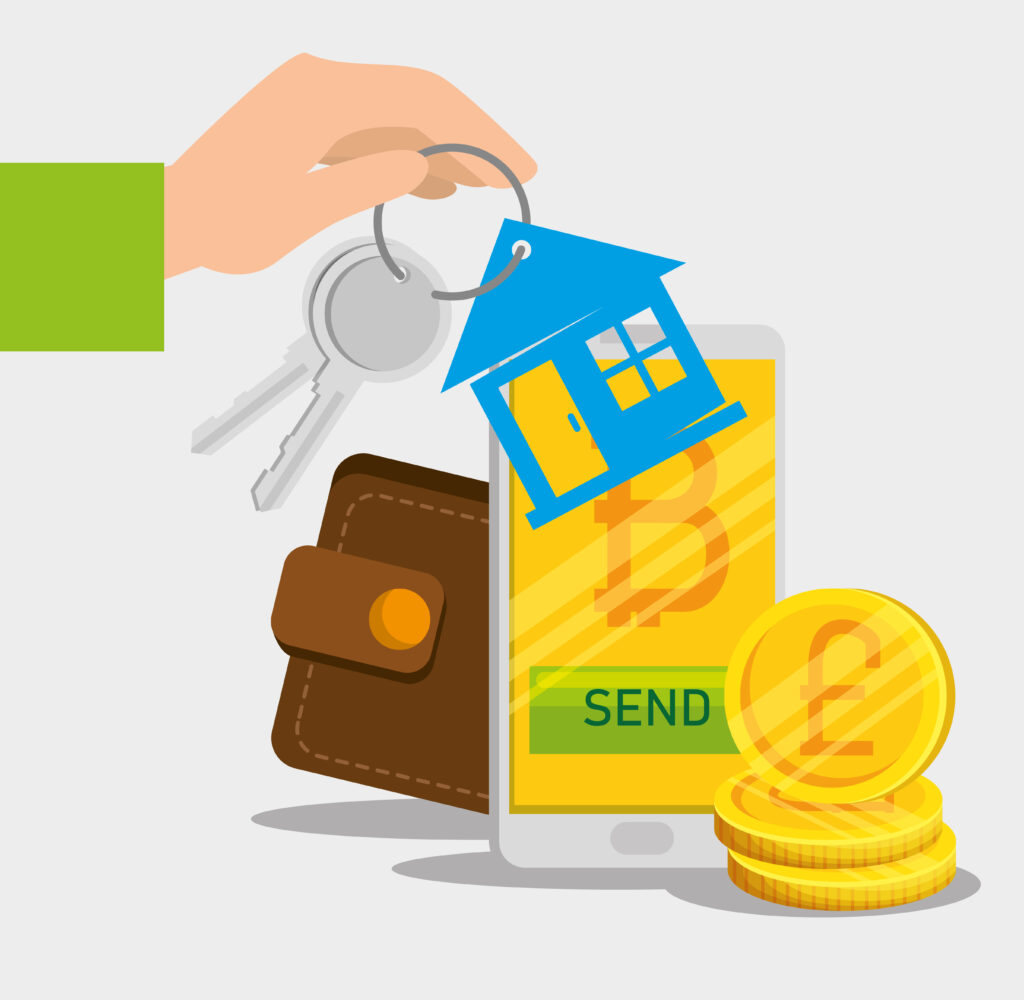1. Gold Loan Rates Explained
Introduction: Basics and Market Impact
In the dynamic world of finance, gold loans have carved out a niche as both a traditional and innovative lending option. These loans, backed by the enduring value of gold, offer a blend of security and flexibility, making them a favored choice for many borrowers. This section explores the essence of gold loans and the critical importance of interest rates in shaping their market presence.
Understanding Gold Loans
Gold loans are a form of secured lending, where borrowers pledge gold jewelry, coins, or bars as collateral. This form of lending is not just a modern financial product but one deeply rooted in history, spanning various cultures and economies. The appeal of gold loans lies in their simplicity and the inherent stability of gold as an asset. Typically, the loan amount is directly tied to the market value of the gold, ensuring a fair and transparent borrowing process.
Interest Rates’ Significance
Interest rates are more than just a financial term; they are a pivotal factor in the borrowing and lending ecosystem. In the realm of gold loans, these rates play a decisive role. They determine not only the cost of borrowing but also the appeal and accessibility of these loans. The rates are influenced by a myriad of factors, including global market trends, central bank policies, and the ever-fluctuating value of gold itself. For borrowers, a clear understanding of these rates is crucial in making informed financial decisions. For lenders, setting competitive yet sustainable rates is key to attracting and retaining customers.
Gold Loan Popularity
The popularity of gold loans can be attributed to several factors. Primarily, they offer a quick disbursal of funds, often with minimal documentation, making them an ideal solution for urgent financial needs. Unlike other forms of secured loans, gold loans don’t require a high credit score or extensive credit history, broadening their accessibility. Furthermore, in times of economic uncertainty or volatility in other investment markets, gold loans provide a sense of security and stability, both for the borrower and the lender. The gold pledged as collateral often appreciates over time, providing an additional layer of security against the loan.
The continued relevance and popularity of gold loans in today’s fast-paced financial world are a testament to their inherent value. As we delve deeper into the nuances of gold loan rates and their impact on both the lender and borrower, it becomes clear that these loans are more than just a financial transaction; they are a bridge between traditional asset value and modern financial needs.

2. Factors Affecting Loan Rates
Determination: Market and Borrower Influences
Interest rates on gold loans are dynamic and subject to a variety of factors. Understanding these elements is crucial for borrowers to make informed decisions when considering a gold loan.
Key Factors
- Market Dynamics: The overarching economic environment plays a crucial role in determining interest rates. Factors such as inflation, economic growth rates, and central bank policies significantly influence lending rates. Additionally, gold prices themselves are subject to global market trends, which in turn affect the loan-to-value ratio and the interest rates of gold loans. During times of economic uncertainty or when gold prices soar, lenders may adjust rates to mitigate risk.
- Gold Purity: The purity and weight of the gold offered as collateral are central to determining the loan value. Higher purity and weight typically lead to a higher loan amount, which can influence the interest rate offered. Lenders assess the gold’s value based on these parameters, affecting the overall risk profile of the loan.
- Loan Duration: The tenure of the loan is another critical factor. Generally, shorter-term loans attract higher interest rates. This is often due to the increased risk and administrative efforts involved in short-term lending. Conversely, longer loan durations might have slightly lower rates but could result in higher interest payments over time.
- Credit History: A borrower’s credit history is a significant determinant of the interest rate they receive. Lenders assess the borrower’s past credit behavior, repayment history, and current financial stability. A strong credit history suggests a lower risk of default, often resulting in more favorable interest rates.
Rate Comparisons Among Financial Institutions
There’s a notable variance in the interest rates offered by different financial institutions. This diversity stems from each institution’s unique approach to risk assessment, operational costs, and competitive strategy. Banks, NBFCs (Non-Banking Financial Companies), and local lenders each have their criteria for setting rates. Borrowers need to undertake thorough comparisons, not just of the interest rates but also of other loan terms and services offered. Such comparisons ensure that borrowers can secure the most advantageous deal available.
Changing Interest Rate Trends
The landscape of interest rates on gold loans is continually evolving. This evolution is driven by several factors, including global economic shifts, domestic policy changes, and advancements in the financial and lending sectors. Technological innovation, in particular, has a growing impact on the lending industry, offering more sophisticated risk assessment tools and improved operational efficiency. These advancements can lead to more competitive and borrower-friendly interest rates. As the global economy and technology landscape continues to evolve, so too will the trends in gold loan interest rates, highlighting the need for both borrowers and lenders to stay informed and adaptable.
3. Rate Challenges for Parties
Borrowers and Lenders: Understanding and Profitability Issues
In the dynamic landscape of gold loans, both borrowers and lenders face unique challenges when it comes to interest rates. Understanding these challenges is crucial for maintaining a balanced and healthy financial ecosystem.
Borrowers’ Rate Comprehension
Many borrowers struggle with comprehending how interest rates directly impact their loan repayments. This lack of understanding often stems from the complex nature of financial terms and calculations involved in loan agreements. For instance, a slight difference in the interest rate can significantly alter the total amount repayable, affecting the borrower’s financial planning. The challenge is compounded for those unfamiliar with financial jargon, leading to decisions that may not align with their financial capabilities or needs. This gap in comprehension underscores the need for more transparent and straightforward communication from lenders, ensuring borrowers are fully informed and aware of their financial commitments.
Lenders’ Rate-Setting Challenges
Lenders, on the other hand, face the intricate task of setting interest rates that balance their profitability with being competitive in the market. High-interest rates might ensure higher returns but could deter potential borrowers, especially in a market where competitors offer lower rates. Conversely, setting interest rates too low may attract a larger customer base but can impact the lenders’ revenue and ability to cover operational costs. This delicate balancing act requires lenders to be acutely aware of market trends, borrower sensitivities, and their financial health.
Furthermore, lenders must also consider the cost of funds, operational expenses, and risk factors associated with gold loans. The volatility of gold prices can add another layer of complexity to this equation, as lenders need to account for potential fluctuations that could affect the loan’s security value.
Impact of Regulatory Changes
Regulators play a pivotal role in the gold loan sector, often stepping in to ensure fair practices and safeguard borrower interests. Changes in regulations can significantly impact how lenders set their interest rates. For instance, regulatory caps on interest rates can limit how much lenders can charge, aiming to protect borrowers from excessively high rates. However, these caps must be carefully calibrated to ensure they do not adversely affect the lenders’ ability to operate profitably and sustainably.
Regulations may also mandate certain disclosures and transparency in how interest rates are calculated and applied, which can increase the operational burden on lenders. They need to invest in compliance, systems, and processes to meet these regulatory requirements, which can indirectly influence the cost of lending and, consequently, the interest rates offered.
Moreover, regulations often change in response to economic conditions, such as inflation rates and economic downturns, which can further complicate the rate-setting process for lenders. They must remain agile and responsive to such changes, adapting their interest rate strategies while ensuring compliance with the latest regulatory standards.
4. Tech in Loan Processing
Technology’s Role: Simplification and Transparency
The integration of technology into the gold loan sector has been transformative, revolutionizing how loans are processed and managed. This section delves into the pivotal role of technology in simplifying and bringing transparency to the gold loan process.
Tech Advancements in Loan Processes
The recent wave of technological advancements in the gold loan sector includes several key innovations:
- Automated Gold Valuation: Advanced algorithms now enable more accurate and instantaneous valuation of gold, ensuring fair loan amounts.
- Online Application Processes: The shift to online platforms has made applying for gold loans more accessible and convenient for borrowers. Digital applications streamline the entire process, reducing paperwork and saving time.
- Digital KYC (Know Your Customer): Implementing digital KYC has revolutionized the verification process. It allows for quicker and more secure verification of borrower identities, speeding up the approval process.
- E-Signatures and Digital Contracts: The use of electronic signatures and digital contracts has expedited the legal formalities involved in gold loans, making the process smoother and faster.
Digital Tools’ Benefits
The benefits of incorporating digital tools in the gold loan process are extensive:
- Increased Accuracy: Digital tools offer greater precision in gold valuation, ensuring fair loan amounts and interest rates.
- Faster Loan Disbursal: Thanks to automation and online processing, loans can now be disbursed more quickly than ever before.
- Improved Record-Keeping: Digital records facilitate better tracking and management of loan accounts, enhancing operational efficiency for lenders.
- Enhanced Transparency: The use of digital platforms makes the entire loan process more transparent, building a foundation of trust between borrowers and lenders.
Innovations in Risk Assessment
One of the most significant technological advancements has been in the field of risk assessment:
- Data-Driven Decision Making: Lenders now use data analytics to assess the risk profile of borrowers more accurately, allowing for more informed lending decisions. This data-centric approach considers various factors, including credit history, market trends, and borrower behavior.
- AI and Machine Learning Models: Artificial intelligence (AI) and machine learning (ML) are increasingly used to predict loan defaults and assess the borrower’s ability to repay. These technologies help in creating personalized risk profiles, leading to more tailored interest rates.
- Real-Time Monitoring and Analysis: Technology enables lenders to monitor market trends and gold prices in real time. This dynamic approach to risk assessment means that interest rates can be adjusted more quickly in response to market changes, benefiting both lenders and borrowers.
5. Quickboarding: A Game Changer
Innovation: Streamlining and Fair Rates
Quickboarding is emerging as a pivotal innovation in the gold loan sector, promising to reshape how these loans are processed, managed, and perceived. This advanced technology stands as a testament to the power of digital transformation in the financial sector, especially in areas as traditional as gold loans.
Quickboarding in the Gold Loan Sector
At the core of Quickboarding is its ability to employ state-of-the-art technology to radically streamline the entire gold loan process. This includes:
- Speedy Verification: Quickboarding leverages digital systems to accelerate the verification of borrower credentials, significantly cutting down processing time.
- Instant Gold Appraisal: Utilizing advanced AI algorithms, Quickboarding offers an immediate and accurate appraisal of the gold being pledged. This not only ensures a fair loan value but also enhances trust in the lending process.
- Rapid Loan Disbursement: With Quickboarding, the time between application and disbursement of funds is dramatically reduced, facilitating immediate financial support for the borrower.
This enhanced efficiency is not just about speed; it’s about redefining the user experience. Borrowers are no longer bogged down by cumbersome processes; instead, they are met with a seamless, user-friendly, and quick service that respects their time and needs.
Impact on Loan Process and Interest Rates
The influence of Quickboarding extends beyond just operational efficiency; it has a profound impact on the economics of gold loans:
- Competitive and Fair Interest Rates: By optimizing operational processes and reducing administrative overheads, Quickboarding enables lenders to offer more competitive interest rates. This is not only beneficial for attracting borrowers but also critical in making gold loans a more viable and attractive financial solution.
- Enhanced Accuracy in Gold Valuation: Quickboarding’s AI-powered valuation engine ensures that the gold’s worth is assessed with utmost precision. This valuation accuracy protects both the lender and borrower, ensuring fair loan amounts and interest rates.
- Reduced Risk and Lower Costs: The efficiency and accuracy brought by Quickboarding translate into lower risks for lenders. Lower risk often leads to lower interest rates, as lenders are more comfortable with the loan’s security. Moreover, operational cost savings can be passed on to borrowers in the form of reduced interest rates.
Quickboarding and Customer Satisfaction
In today’s fast-paced world, customers value quick and hassle-free services. Quickboarding directly addresses this need by significantly reducing the time from application to disbursal. For borrowers in urgent need of funds, this rapid process is a major draw.
The transparency and simplicity of the Quickboarding process also enhance customer trust and satisfaction. Borrowers can enjoy a more straightforward and understandable loan process, free from the often complex and opaque procedures of traditional gold lending. This transparency not only builds trust but also empowers customers by giving them a clearer understanding of their loan terms.
6. Quickboarding Advantages
Quickboarding is revolutionizing the gold loan landscape, offering a plethora of benefits that propel financial institutions into a new era of lending efficiency and customer satisfaction.
Assistance for Banks/NBFCs
The introduction of Quickboarding into the gold loan sector has significantly enhanced the capabilities of banks and NBFCs in several key areas:
- Risk Management: With Quickboarding, institutions can leverage advanced algorithms for more accurate risk assessment. This leads to better-informed loan decision-making, minimizing the risk of defaults while ensuring fair loan terms based on individual borrower profiles.
- Regulatory Compliance: The ever-evolving financial regulatory landscape demands adaptability and strict adherence to guidelines. Quickboarding ensures compliance with the latest regulatory standards, thus safeguarding the institution against legal vulnerabilities while protecting customer interests.
- Operational Efficiency: One of the standout features of Quickboarding is its ability to streamline and optimize loan processing. This translates to significant reductions in administrative costs and processing time, boosting overall efficiency. By automating routine tasks and digitizing documentation, Quickboarding minimizes manual errors and operational bottlenecks.
Customer Experience and Operational Improvement
The deployment of Quickboarding dramatically enhances the customer experience in the gold loan process. It achieves this by:
- Simplifying the Loan Process: Quickboarding makes the complex process of applying for and receiving a gold loan much more accessible and easy to understand. This accessibility broadens the customer base, allowing more individuals to avail themselves of gold loan services.
- Enhancing Transparency: Through digital interfaces and clear communication, Quickboarding provides customers with a transparent view of their loan terms, interest rates, and repayment schedules. This level of transparency builds trust and helps customers make informed financial decisions.
- Speeding Up Loan Disbursal: The efficiency of Quickboarding significantly reduces the time from application to disbursal. Customers appreciate the quick access to funds, especially in times of urgent financial need.
- Improving Customer Interactions: With more streamlined processes, staff at financial institutions can focus more on customer service and less on manual processing. This shift leads to better customer interactions, higher satisfaction, and increased loyalty.
The implementation of Quickboarding is not just a technological upgrade but a strategic move towards a more efficient, customer-centric, and compliant gold loan processing system. Its advantages extend beyond immediate operational improvements, setting a foundation for sustainable growth and customer satisfaction in the dynamic world of financial lending.

7. Implementing Quickboarding
Integration Steps: Benefits and Processes
Implementing Quickboarding into existing financial systems marks a pivotal step towards enhancing the gold loan process, reaping significant long-term benefits for both the institution and its customers.
Incorporation into Existing Systems
Quickboarding’s design emphasizes ease of integration. It’s engineered to seamlessly blend with current financial infrastructures, ensuring minimal disruption during its adoption. This compatibility is key, as it allows financial institutions to upgrade their services without overhauling their existing systems entirely.
Ease of Integration and Long-Term Advantages
The integration of Quickboarding is not just a technological upgrade; it’s a strategic enhancement. Its straight forward implementation process is designed to minimize downtime and operational hiccups. Once integrated, the long-term benefits become increasingly apparent. These include enhanced customer loyalty, resulting from more transparent and efficient services, and improved operational efficiency, leading to cost savings and streamlined processes. Additionally, Quickboarding positions financial institutions at the forefront of innovation, strengthening their market position and competitive edge.
8. Future of Digitalized Gold Loans
Conclusion: Recap and Digital Impact
The landscape of gold loans is undergoing a significant transformation, primarily driven by the advent of digital technologies. Among these, Quickboarding stands out as a major influencer, reshaping how gold loans are processed and managed.
Summary of Key Points
- Interest Rates and Market Dynamics: A comprehensive understanding of how interest rates are determined and their impact on the gold loan market.
- Technological Evolution: The significant role of technology in streamlining loan processes and improving risk assessment.
- The Revolution of Quickboarding: How Quickboarding is transforming the gold loan sector by enhancing efficiency, transparency, and customer satisfaction.
Digitalization’s Role in Evolving Gold Loans
The ongoing digitalization in the gold loan sector is indicative of a broader shift towards more customer-centric and efficient financial services. As technology continues to evolve, the sector is likely to witness further innovations that will redefine the gold loan experience. These advancements promise not only enhanced convenience and speed but also greater inclusivity in financial services. The future of gold loans, therefore, lies in leveraging these digital tools to create a more equitable, transparent, and user-friendly lending landscape, making financial services accessible to a wider demographic.
FAQs
1. What is a gold loan and why are interest rates important?
- A gold loan is a secured loan where borrowers pledge gold jewelry or coins as collateral to obtain funds. The interest rate is crucial as it determines the cost of borrowing. Lower rates make loans more affordable, whereas higher rates can increase the repayment burden.
2. How are gold loan interest rates determined?
- Gold loan interest rates are influenced by several factors: market dynamics, the purity of the pledged gold, the duration of the loan, and the borrower’s credit history. Different banks and Non-Banking Financial Companies (NBFCs) offer varying rates based on these factors.
3. What challenges do borrowers and lenders face with current interest rate models?
- Borrowers often struggle to understand and compare different interest rates due to their complexity. Lenders, on the other hand, face the challenge of setting rates that balance competitiveness with profitability.
4. How does technology improve gold loan procedures and interest rate structures?
- Technology, especially digital tools, streamlines the gold loan process, making it faster and more transparent. This can lead to more accurate and fair interest rate structures, benefiting both borrowers and lenders.
5. What is quickboarding and how does it impact gold loan interest rates?
- Quickboarding is a digital innovation in the gold loan sector that simplifies the loan process, potentially leading to more competitive and equitable interest rates. It automates and streamlines various aspects of the loan procedure.

